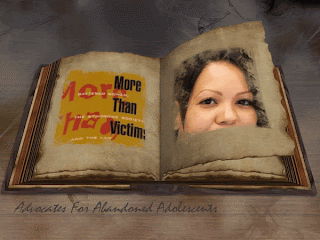Prosecutors said Kruzan was no longer working for Howard when she killed him.
The Riverside Press-Enterprise says the petition for release cites years of abuse she suffered at the hands of Howard. Psychologists now say Kruzan was suffering battered women’s syndrome after years of sexual trafficking.
Last year, San Francisco state Sen. Leland Yee made the Kruzan case a centerpiece of his proposed law allowing the courts to reduce life sentences for minors. In August, the Assembly killed his Fair Sentencing for Youth Act.
Battered person syndrome is a physical and psychological conditionthat is classified as ICD-9 code 995.81 "Battered person syndrome" NEC. The condition is the basis for the battered woman defense that has been used in cases of physically and psychologically abused women who have killed their abusers. The condition was first researched extensively by Lenore Walker who used Martin Seligman's learned helplessness theory to explain why abused women stayed in destructive relationships.
Diagnosis
ICD9 code 995.81 shows the syndrome as including "battered person/man/spouse syndrome NEC" and any person presenting with identified physical descriptors rather than psychological descriptors falls under the general heading of "Adult physical abuse", classified under "Injury and Poisoning".DSM-IV-TR does not provide a distinct diagnostic category for reactions to battering. Rather the diverse reactions of battered women are treated as separate diagnoses, for example, Post Traumatic Stress Disorder (PTSD) or depression.
Symptomology
When BPS manifests as PTSD, it consists of the following symptoms: (a) re-experiencing the battering as if it were reoccurring even when it is not, (b) attempts to avoid the psychological impact of battering by avoiding activities, people, and emotions, (c) hyperarousal or hypervigilance, (d) disrupted interpersonal relationships, (e) body image distortion or other somatic concerns, and (f) sexuality and intimacy issues.
Additionally, repeated cycles of violence and reconciliation can result in the following beliefs and attitudes:
- The abused believes that the violence was his or her fault.
- The abused has an inability to place the responsibility for the violence elsewhere.
- The abused fears for his/her life and/or the lives of his/her children (if present).
- The abused has an irrational belief that the abuser is omnipresent and omniscient.
Etiology
The syndrome develops in response to a three stage cycle found in domestic violence situations. First, tension builds in the relationship. Second, the abusive partner releases tension via violence whilst blaming the victim for having caused the violence. Third, the violent partner makes gestures of contrition. However, the partner does not find solutions to avoid another phase of tension building and release so the cycle repeats. The repetition of the violence despite the abusers attempt's to "make nice" results in the abused partner feeling at fault for not preventing a repeat cycle of violence. However since victim is not at fault and the violence is internally driven by the abuser's need to control, this self-blame results in feelings of helplessness rather than empowerment. The feeling of being both responsible for and helpless to stop the violence leads in turn to depression and passivity. This learned depression and passivity make it difficult for the abused partner to marshal the resources and support system needed to leave.
Feelings of depression and passivity may also be created by lack of social support outside of the abusive situation. Research in the 1980s by Gondolf and Fisher found that women in abusive situations increase help seeking behavior as violence intensifies. However, their attempts at seeking help are often frustrated by unresponsive extended family and social services. In a 2002 study, Gondolf found that more than half of women had negative views of shelters and programs for battered women because of negative experiences with those programs.
Legal history
The battered person syndrome first rose to prominence in the 1970s when it was used as a legal defense for abused women who murdered their husbands in a pre-meditated fashion. Defense lawyers used the syndrome to explain premeditation as follows: the woman could not leave the relationship due to learned helplessness. Nor could they fight back when actually being attacked. In the face of increasing violence, the woman's belief was that the only way she could protect herself and her children was to eliminate the partner when he was more vulnerable, for example, while sleeping.
In recent years BPS has been questioned as a legal defense on several grounds. First, legal changes in many states now make it possible to admit a history of past abuse into evidence. Second, not all battered women act the same. Third, it pleads pathology when there may in fact be completely rational reasons for the victim's assessment that her life or that of her children were in danger. For example, if life threatening attacks were preceded by a certain look in the eyes in the past, the woman may have probable cause for believing that another life threatening attack was likely to occur. Fourth, it does not provide for the possibility that a person may be abused but have chosen to kill for reasons other than on-going abuse, for example, jealousy or greed. Fifth, it paints survivors of domestic violence exclusively as passive victims rather than resourceful survivors

Comments